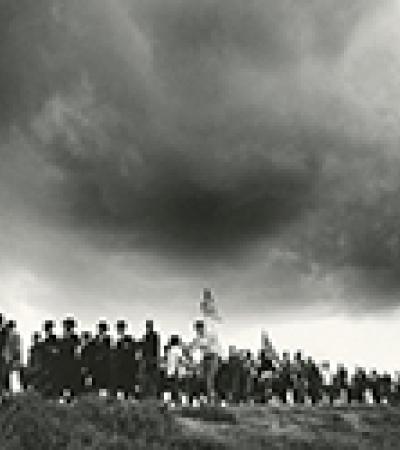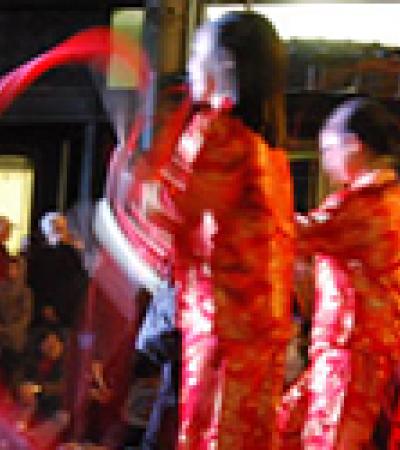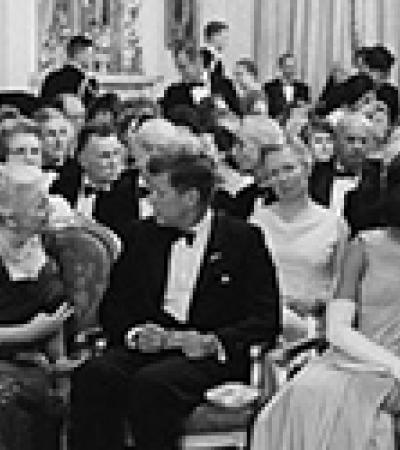This month, EDSITEment looks back at Pearl Harbor, celebrates holiday traditions from Mexico, takes a peek into the life of Emily Dickinson, and examines the creation of the Bill of Rights. Plus, find out more about PBS’s upcoming The Abolitionists and discover websites on 1968, the King James Bible, and Hawaii.
The Road to Pearl Harbor
Although most Americans were shocked by the Japanese attack on Pearl Harbor on December 7, 1941, the outbreak of war between the two countries came as no surprise to most observers of international affairs. Indeed, the war could be seen as the culmination of tensions between the two countries that can be traced back to 1915, when Japan issued its so-called “Twenty-One Demands” on China. These demands, presented as an ultimatum to the Chinese government, would have amounted to giving Japan a privileged status in certain parts of the country. This was in direct conflict with the stated policy of the United States toward China—the famous “Open Door,” in which all countries were to respect Chinese sovereignty and enjoy equal access to Chinese trade. The Road to Pearl Harbor: The United States and East Asia, 1915–1941 curriculum unit includes four lesson plans for grades nine through twelve.

Poinsettias, Posadas, Piñatas, Pathways of Light: Holiday Traditions from Mexico!
When the Spanish Europeans came to America, they were introduced to the culture, art, and agricultural products native to the Americas. Likewise, indigenous people in what is now Mexico were exposed to many practices from Europe that were new to them, as well. This December, EDSITEment invites students and teachers to celebrate this encounter between the Old and New Worlds by discovering holiday traditions from Mexico in Poinsettias, Posadas, Piñatas, Pathways of Light! Holiday Traditions from Mexico.
Emily Dickinson
Widely known and loved, Emily Dickinson continues to delight each new generation with her unique verse. But, are your students aware of the other ways she expressed her creative gifts? They may be interested to discover that though Dickinson only published a handful of poems in her lifetime, she was renown in her hometown of Amherst as an accomplished baker and gardener. In Emily Dickinson: An American Poet for All Seasons, learn how to bake Emily’s signature Black Cake or her Coconut Cake; discover her letters; and learn about Dickinson’s status in her community, her flower poems, and the influence of gardening on both.
Creation of the Bill of Rights
The Creation of the Bill of Rights: “Retouching the Canvas” focuses on the arguments either for or against the addition of a Bill of Rights between 1787 and 1789. By examining the views of prominent Americans in original documents, students will see that the issue at the heart of the debate was whether a Bill of Rights was necessary to secure and fulfill the objects of the American Revolution and the principles of the Declaration of Independence. Students will also gain an understanding of the origins of the Bill of Rights and how it came to be part of what Thomas Jefferson called “the American mind,” as well as a greater awareness of the difficulties that proponents had to overcome in order to add the first ten Amendments to the Constitution.
The Abolitionists
Learn how abolitionist allies Frederick Douglass, William Lloyd Garrison, Harriet Beecher Stowe, John Brown, and Angelina Grimké turned a despised fringe movement against chattel slavery into a force that literally changed the nation in The Abolitionists, which will premiere on January 8 as part of PBS’s American Experience series. Visit the The Abolitionists website for teacher resources, an interactive map, and a further reading list.
Recommended Websites
1968 Exhibit: Round out a most extraordinary year! December 1968: Astronauts orbit the Moon, sending back the first images of Earth.
Manifold Greatness: Half a billion people tuned into the 1968 Christmas Eve television broadcast to hear the Apollo 8 crew read from the Book of Genesis.
Picturing Hawai’i: From the Honolulu Museum of Art. A Teachers Resource Book and accompanying images show how to use works from the museum’s collection to supplement lessons in history, art, language arts, math, and science.



